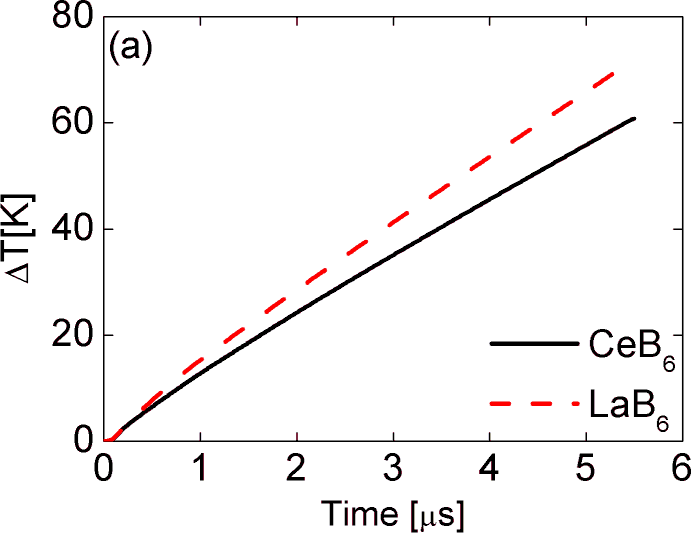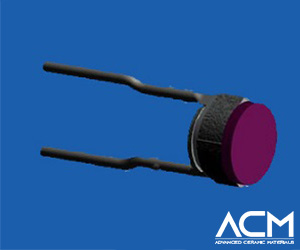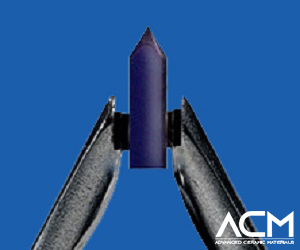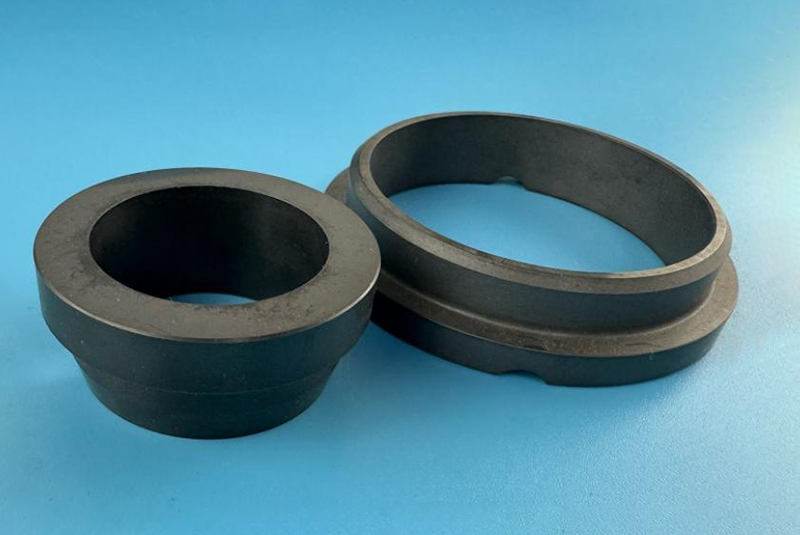LaB6 Cathode vs. CeB6 Cathode in RF Electron Gun
The pursuit of advanced particle acceleration techniques is fundamental in high-energy physics. At the heart of this technology are RF electron guns, which are essential for generating high-quality electron beams. The choice of cathode material significantly influences the efficiency and performance of these guns. This article examines the properties of LaB6 and CeB6 cathodes, comparing their heating characteristics and implications for use in particle accelerators.
Introduction to RF Electron Guns
RF electron guns are pivotal in modern particle accelerators, providing the means to create high-brightness and low-emittance electron beams. These guns operate by utilizing radio frequency fields to accelerate electrons extracted from a cathode. The efficiency of RF guns is attributed to their ability to achieve high acceleration fields—typically around 50 MV/m—thereby reducing emittance growth due to space charge effects.
![]()
Draconichiaro, CC BY-SA 4.0 <https://creativecommons.org/licenses/by-sa/4.0>, via Wikimedia Commons
Their compact design and operational simplicity make RF guns a favored choice in facilities like free electron lasers (FEL) and linear colliders. Unlike traditional electrostatic guns, RF guns do not necessitate complex laser systems, which reduces costs and enhances their practical application.
The Role of Cathodes
Cathodes are critical to the performance of RF electron guns, serving as the source of emitted electrons. The effectiveness of a cathode is influenced by several factors, including work function, thermal stability, and current emission capacity. A well-selected cathode can significantly enhance the overall performance of the electron gun, directly impacting beam quality, stability, and longevity. LaB6 and CeB6 are two materials that have garnered attention due to their favorable emission properties and potential for improved performance in RF applications.
Properties of LaB6 Cathode
LaB6, or lanthanum hexaboride, is known for its excellent electron emission capabilities. It has a work function ranging from 2.66 eV to 2.87 eV, leading to operating temperatures around 1650 °C. LaB6 cathode demonstrates good mechanical strength and thermal stability; however, it is not without challenges. Under the influence of the BB effect, LaB6 cathodes can experience significant increases in temperature and current density, which may affect their operational lifespan. The susceptibility of LaB6 to thermal degradation due to BB electrons highlights the importance of careful thermal management in applications.
Properties of CeB6 Cathode
CeB6, or cerium hexaboride, presents an alternative with notable advantages. Its work function is slightly lower, ranging from 2.5 eV to 2.65 eV, which facilitates easier electron emission at lower temperatures. CeB6 also exhibits a lower evaporation rate compared to LaB6, enhancing its durability in high-temperature environments. The unique crystal structure of CeB6 allows for effective thermal management, reducing the risk of overheating and prolonging the material’s life under operational conditions. These properties make CeB6 cathode an appealing candidate for use in RF electron guns, especially where thermal stability is a concern.
Here’s a table summarizing the properties of LaB6 and CeB6 cathodes:
| Property | LaB6 (Lanthanum Hexaboride) | CeB6 (Cerium Hexaboride) |
|---|---|---|
| Work Function | 2.66 eV to 2.87 eV | 2.5 eV to 2.65 eV |
| Operating Temperature | Approximately 1650 °C | Lower operating temperatures |
| Mechanical Strength | Good mechanical strength | High mechanical strength |
| Thermal Stability | Moderate, susceptible to BB effect | High, effective thermal management |
| Current Density Increase | Significant under BB effect | Lesser increase under BB effect |
| Evaporation Rate | Higher evaporation rate | Lower evaporation rate |
| Durability | Potentially reduced lifespan | Enhanced durability |
| Crystal Structure | Standard structure | Unique structure for thermal management |
Comparative Analysis of Heating Properties
The heating properties of LaB6 and CeB6 cathodes are crucial for understanding their performance in RF electron guns, particularly under the influence of the BB effect. The BB effect occurs when electrons extracted from the cathode gain kinetic energy during acceleration, subsequently returning to the cathode. This process raises the cathode temperature and alters the current density, which can lead to performance degradation.
Numerical simulations[1] have demonstrated that LaB6 experiences a significant increase in current density during a macropulse. Specifically, the change in current density for LaB6 can be twice that of CeB6 during a 5.5 μs pulse. This finding suggests that LaB6 is more susceptible to the adverse effects of BB electrons, which results in higher thermal loads and potentially shorter operational lifetimes. In contrast, CeB6 shows a more stable response to BB effects, with smaller changes in temperature and current density. The lower work function of CeB6 contributes to its reduced sensitivity to BB electrons, allowing it to maintain performance with less thermal strain.
Furthermore, the thermal conductivity of these materials plays a vital role in their heating properties. LaB6 exhibits relatively high thermal conductivity, which can aid in dissipating heat but also leads to rapid temperature increases when subjected to BB effects. In contrast, CeB6, while still offering good thermal properties, tends to manage heat more effectively due to its inherent material characteristics. This difference in heat management is critical for maintaining stable operation and prolonging the life of the cathode in practical applications.

Changes in (a) cathode temperature and (b) current density for LaB6 and CeB6 cathodes derived from the numerical code. [1]
In terms of operational implications, the increased heating in LaB6 not only affects current density but also influences the overall quality of the emitted beam. Higher temperatures can lead to increased thermal stress, potentially causing material degradation over time. This concern underscores the importance of selecting a cathode material that can withstand the demands of high-performance RF electron guns, particularly in applications requiring long-duration pulses.
Implications for Particle Acceleration
The choice between LaB6 and CeB6 as cathode materials has significant implications for the design and performance of RF electron guns. While LaB6 offers robust performance in terms of emission capability, its susceptibility to thermal degradation under the BB effect poses challenges for extended use in high-power applications. Conversely, CeB6’s lower sensitivity to thermal changes, combined with its favorable work function, makes it a strong candidate for applications where stability and longevity are critical.
The ongoing research into the properties of these cathodes continues to inform best practices for RF gun design. As the demand for high-quality electron beams grows, understanding the nuances of cathode performance becomes increasingly vital. Selecting the appropriate material can lead to enhancements in beam quality, stability, and overall system efficiency, ultimately advancing the capabilities of particle accelerators.
Conclusion
In conclusion, the comparative analysis of LaB6 and CeB6 cathodes reveals important insights into their performance within RF electron guns. While both materials have distinct advantages, the impact of the BB effect and their respective heating properties must be carefully considered in the context of specific applications. As research progresses, the optimization of cathode materials will remain a key focus, driving innovations in particle acceleration technology and enhancing the capabilities of future scientific endeavors.
For those interested in high-quality cathode materials, Advanced Ceramic Materials (ACM) provides a range of options, including LaB6 and CeB6. Their products are designed to meet the demanding requirements of modern particle acceleration technologies, making them a valuable resource for researchers and engineers in the field.
Reference:
[1] Bakr, Mahmoud. (2011). Comparison of Heating Property of LaB6 and CeB6 by Back Bombardment Effect in Thermionic RF gun. Journal of Korean Physical Society. 59. 3273-. 10.3938/jkps.59.3273.
{{item.content}}
LEVE A REPLY
{{item.children[0].content}}
{{item.content}}
LEAVE A REPLY
SUBSCRIBE OUR NEWSLETTER
- Boron Nitride in Cosmetics: Enhancing Performance and Sensory Appeal
- Maximize MOCVD Yield and Purity with Hexagonal Boron Nitride Setters
- What Are the Advantages and Uses of Boron Nitride Ceramic Sheet?
- The Compression Annealing Advantage for Pyrolytic Boron Nitride
- Beyond Insulation: The Surprising Spectrum of Ceramic Thermal Conductivity











